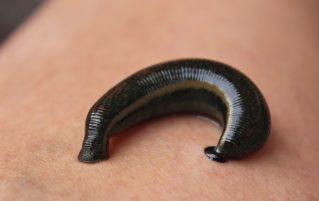

The nervous system is made up of the brain, the spinal cord and a network of neurons (nerve cells), that run throughout your body. The nervous system is really important as it allows your body to send observations and information to the brain or the spinal cord. This enables communication. Animal brains come in a wide variety of shapes and sizes. However, large brains do not necessarily equate to high intelligence! What seems to be important, is the number of neurons and where they are found. The outer layer of the human brain, the cerebral cortex, contains 16 billion neurons, more than any other animal.
A spider’s brain actually spills over into other parts of their body, especially if the spider is small. The smaller the spider, the bigger the brain relative to the spider’s size. Having said this, most are so small they can fit onto the tip of a needle. Despite their small brains, spiders are intelligent. They have to be to survive, needing hunting skills and the ability to spin webs.
Leeches are even more unusual. Their internal structure is divided into 32 separate segments and each segment has its own brain. Even weirder – they have 2 hearts, 300 teeth and 5 pairs of eyes!!
Sea squirts actually eat their own brains! They begin life resembling a tadpole, with a brain. However, when they mature, they stick their heads on a rock and change into their adult form. Basically, this consists of a mouth, a stomach and an exit tube! The sea squirt then eats (or reabsorbs to be accurate!) its nervous system!
GCSE scientists, you need to know information about the nervous system. You should be able to describe the differences between sensory, relay and motor neurons, You should also be able explain what a reflex arc is, and how it helps to keep us safe.
To help you understand, check out Part 1 of our “How to work with the Nervous System” guide. This describes the structure of different neurons and the pathway of a reflex arc. It also includes some GCSE questions and answers for you to check your understanding.
Click on the picture below to see the guide.
If you found this useful and think you would benefit from some additional help, please contact us.
Guest bloggers are welcome.
